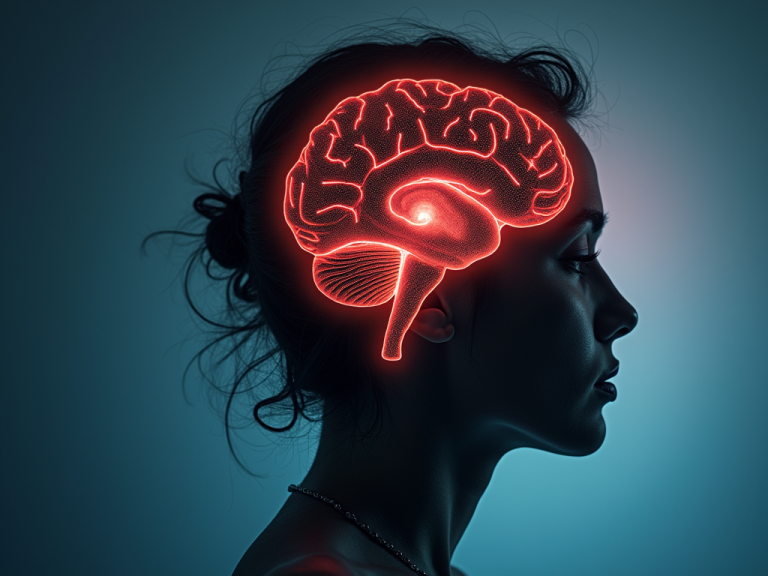
Vestibular Associated Migraine (VAM) is a complex condition with symptoms ranging from mild dizziness to severe vertigo and nystagmus. While much research has been conducted on migraines, the specific triggers and mechanisms behind VAM remain less understood. This article explores a personal theory regarding the potential role of atmospheric pressure changes in triggering VAM episodes, introduces a conceptual framework for tracking vestibular health, and proposes the development of a predictive model to better understand and manage this condition.
The Proposed Theory: Pressure Drops and Vestibular Health
The core idea of this theory is that a series of atmospheric pressure drops may be necessary to trigger a VAM episode. The theory introduces the concept of a Vestibular Health Index (VHI), a hypothetical parameter ranging from 1 to 10 that represents the overall health and stability of the vestibular system:
- VHI = 10: Strong and healthy, with no VAM symptoms.
- VHI < 10: Increasingly lower values correspond to worsening vestibular effects. For example:
- VHI 6–8: Mild symptoms such as cloudiness, fatigue, or a mild headache.
- VHI ≤ 3: Severe symptoms, including nystagmus and debilitating vertigo.
How Pressure Drops Affect VHI
The theory posits that each atmospheric pressure drop reduces the VHI by approximately 2 points, with the vestibular system requiring time to recover after each drop. Recovery follows a curve where improvement is initially rapid but slows over time, taking approximately 10 days for a full recovery back to a VHI of 10.
For example:
- If a storm causes a drop in VHI from 10 to 8, full recovery would occur in about 10 days.
- However, if another storm hits before recovery is complete (e.g., when VHI is still at 9), the additional drop would reduce the VHI further—say, to 7—potentially leading to more significant symptoms.
This cumulative effect suggests that multiple pressure drops within a short timeframe could overwhelm the vestibular system, pushing it below a critical threshold and triggering severe symptoms.
Mitigation Strategies
The theory also proposes that taking medications like ibuprofen or Tylenol may help mitigate the impact of pressure drops on the VHI. By reducing inflammation or addressing pain pathways associated with migraines, these medications could theoretically lessen the magnitude of adverse effects on vestibular health.
Developing a Predictive Model
To test this theory and provide practical tools for managing VAM, the next step would be to develop a predictive model based on:
- Tracking Atmospheric Pressure Changes: Using weather data to monitor pressure drops over time.
- Monitoring Symptoms: Keeping a detailed diary of VAM symptoms and their severity relative to weather conditions.
- Quantifying Recovery Rates: Estimating how quickly vestibular health improves following an episode using subjective symptom scales or objective balance tests.
- Incorporating Mitigation Factors: Evaluating how interventions like medication or lifestyle adjustments influence recovery or prevent symptom escalation.
The model could use algorithms to predict when an individual might be at risk of severe symptoms based on recent weather patterns and their personal recovery timeline.
Has This Research Been Done Before?
While there is some evidence linking barometric pressure changes to migraines in general, research specifically focused on VAM and its relationship with cumulative pressure drops is limited. Studies have shown that barometric pressure fluctuations can trigger migraines in sensitive individuals, but their direct impact on vestibular function remains underexplored.
Developing such a predictive model could fill an important gap in understanding how environmental factors interact with vestibular health in people with VAM.
Conclusion
This proposed theory offers an intriguing framework for understanding how atmospheric pressure changes may contribute to Vestibular Associated Migraine episodes. By conceptualizing vestibular health as a dynamic parameter influenced by external factors like weather systems, we can begin to explore new ways of predicting and managing this condition.
Further research is needed to validate this theory and refine the proposed predictive model. If successful, such tools could empower individuals with VAM to anticipate potential triggers and take proactive steps to mitigate their effects—ultimately improving quality of life for those living with this challenging condition.
What do you think? Could this approach help advance our understanding of Vestibular Associated Migraines? Let’s discuss!